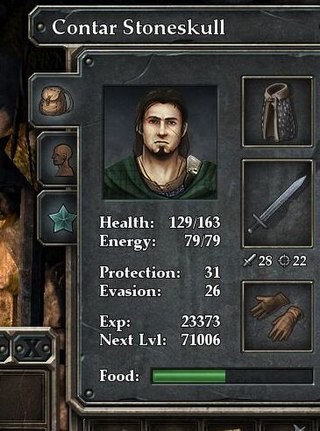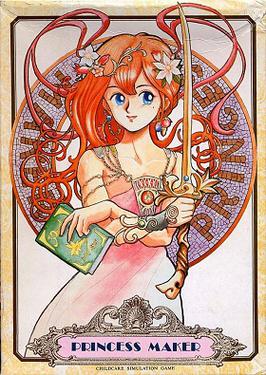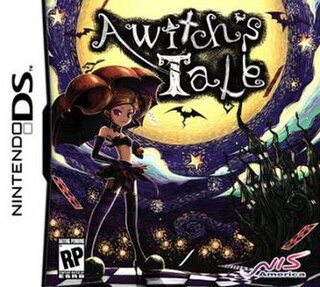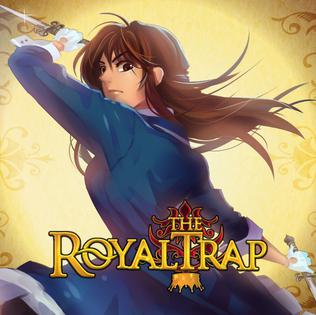
An experience point is a unit of measurement used in some tabletop role-playing games (RPGs) and role-playing video games to quantify a player character's life experience and progression through the game. Experience points are generally awarded for the completion of missions, overcoming obstacles and opponents, and successful role-playing.

Replay value is the potential of a video game or other media products for continued play value after its first completion. Factors that can influence perceived replay value include the game's extra characters, secrets and alternate endings. The replay value of a game may also be based entirely on the individual's tastes. A player might enjoy repeating a game because of the music, graphics, gameplay or because of product loyalty. Dynamic environments, challenging AI, a wide variety of ways to accomplish tasks, and a rich array of assets could result in a high replay value.

Princess Maker (プリンセスメーカー) is a series of social simulation bishōjo games where the player must act as a parental figure and raise a young girl. The series was produced by the video game and anime production company Gainax. The first Princess Maker, while popular enough to be translated into Chinese, was never released in the United States. Princess Maker 2 was translated by SoftEgg for a North American release, but this release was cancelled because publisher Intracorp went bankrupt. Princess Maker 3, Princess Maker 4, and Princess Maker 5 have subsequently been released, as did several spin-off games. The series has been translated and released in Korea (Fujitsu) and Taiwan (Kingformation). An English release of Princess Maker 2 was attempted in mid-90s, but it resulted in failure, and no games in this series were released in English until Princess Maker 2 Refine in 2016. Petite Princess Yucie, an anime series loosely based on the third game but with characters from all previous games, ran for 26 episodes in 2002–2003.

Arcana is a role-playing video game released for the Super Nintendo Entertainment System by HAL Laboratory in 1992. The game represents all of its characters as cards, but plays like a dungeon-crawling role-playing game rather than a card-based game. In keeping with this metaphor, the death of a character results in a 'torn' card, and the magical properties of some cards are used to explain abilities of the game's characters.

Dungeons & Dragons: Shadow over Mystara is an arcade game developed and published by Capcom in 1996 as a sequel to Dungeons & Dragons: Tower of Doom. The game is set in the Dungeons & Dragons campaign setting of Mystara.

Puyo Puyo Fever 2 is a 2005 video game developed by Sonic Team and published by Sega. The game was released as a sequel to the previous title, Puyo Pop Fever. The gameplay remains relatively unchanged, but several new modes are introduced. The game features nine different plots, each one pertaining to its three protagonists. Puyo Puyo Fever 2 was released exclusively in Japan for the PlayStation 2 and PlayStation Portable in November 2005, and later for the Nintendo DS the following month.

Final Fantasy IX, a PlayStation role-playing game consisting of four CD-ROMs, featured a cast containing a variety of major and minor characters. Players could control a maximum of four characters for combat at once, with eight main playable characters in the party and a few other, temporary characters.

Dungeon Magic, known as Light Bringer (ライトブリンガー) in Japan and Europe, is a video game released in arcades by Taito in 1994. The game is a beat 'em up with an isometric perspective and includes some platform gameplay. Blood and gore can be adjusted through a setting.
Hanako Games is an independent video game development company founded by Georgina Bensley that develops PC games mostly involving female protagonists centered on fantasy- and anime-inspired style. Games on the site include Fatal Hearts, Cute Knight, Summer Session, and Science Girls. The website provides free demos for all of the games along with downloadable wallpapers. Hanako Games is an affiliate of Winter Wolves, Tycoon Games and sakevisual.
Deep Dungeon (ディープダンジョン) is a series of role-playing video games developed by HummingBirdSoft. The first two installments were released on the Family Computer Disk System by Square's label DOG; the third one was released on the regular Family Computer by Square directly and the final one by Asmik.

White Knight Chronicles is a fantasy role-playing video game developed by Level-5 and Japan Studio and published by Sony Computer Entertainment for the PlayStation 3. It is Level-5's first project for the system. As of August 2009 it has sold 350,000 copies in Japan. A sequel titled White Knight Chronicles II was released in Japan in 2010. A related game for the PlayStation Portable, titled White Knight Chronicles: Origins was released in Japan, Europe and, Australia in 2011.

The Dark Queen is the main antagonist of the Battletoads video game series by Rare introduced in the original Battletoads in 1991. Dark Queen is the nemesis of the protagonistic Battletoads. She is a mysterious mistress of evil magic and the supreme commander of a space army bent on galactic conquest. The character has received considerable attention due to her sex appeal.

Secret of the Solstice is a free-to-play MMORPG developed and published by DNC Entertainment in Korea and hosted by Outspark in the international English market. It is the second MMO published by Outspark.

Princess Debut, known in Europe as Princess Debut: The Royal Ball, is a rhythm otome game published by Natsume and developed by Cave for the Nintendo DS.

A Witch's Tale, released in Japan as Witch Tale: The Apprentice Witch and the Seven Princesses, is a video game for the Nintendo DS. It was published by Nippon Ichi Software and developed by Hit Maker. The game was initially planned for a Winter 2008 release, but was pushed back to 2009.

Fat Princess is an action real-time strategy video game developed by Titan Studios and published by Sony Computer Entertainment for the PlayStation 3. It was released in North America, Europe and Australia on July 30, 2009, and in Japan on December 25 the same year, as Pocchari Princess. It was included on the Best of PlayStation Network Vol. 1 compilation disc, released on June 18, 2013. A PlayStation Portable version, titled Fat Princess: Fistful of Cake, was released in 2010.

Date Warp is a science fiction visual novel video game developed by Spiky Caterpillar and Hanako Games, and published by Hanako Games for Microsoft Windows, Mac OS and Linux in 2010. The game uses anime-style graphics and is written in English and tells a story of a young Indian-American college female student who goes on a date and disappears.

Magical Diary is a visual novel video game series taking place at a magical school. The first game in the series, now known as Magical Diary: Horse Hall, featured a young freshman magical girl. It was released on June 19, 2011 for Windows, macOS and Linux. It is a fantasy game with elements of romance. The game uses anime-style graphics and is written in English. It was developed and published by Hanako Games. The game was later released on Steam with some bonus content.

Long Live the Queen is a simulation role-playing video game developed by Hanako Games and Spiky Caterpillar, published by Hanako Games. The story of the game follows a young princess who is training to become queen after the death of her mother. The objective of the game is to keep the princess alive for 40 weeks until she turns 15 and is crowned. The game was released on June 2, 2012 for Windows, Mac OS and Linux. The game uses anime-style graphics and is written in English.

The Royal Trap is a visual novel developed and published by Hanako Games on February 23, 2013, for Windows, Mac OS and Linux. The story of the game follows a young companion who has to take care of her prince, Oscar. The game uses anime-style graphics and is written in English. On June 15, 2013, the DVD version of The Royal Trap was released, which also contains a HD version of the game, as well as exclusive concept sketches. It was re-released in April 2015 for Steam with new background art, a higher resolution, and some expanded content. The Steam release also added a subtitle, "The Confines of the Crown"; in 2017, the game on Steam was changed to be advertised as only The Confines of the Crown without "The Royal Trap."


















